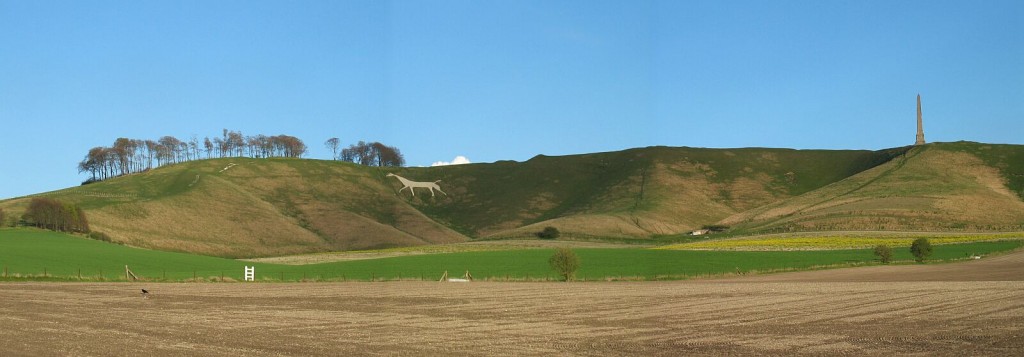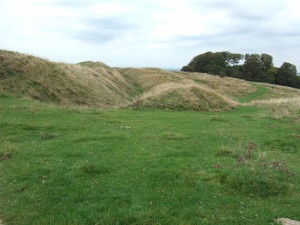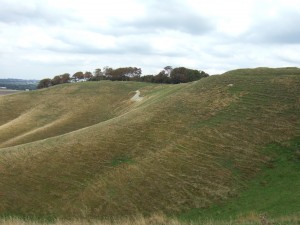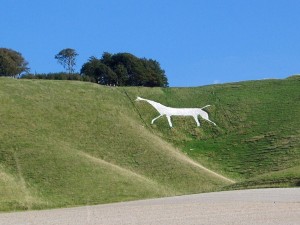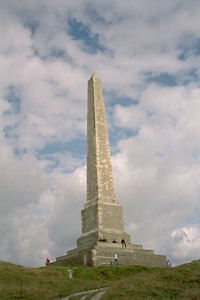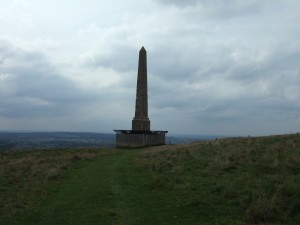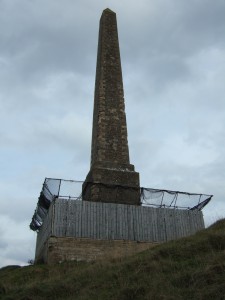Yesterday Chap and I headed north—most unusual for us (our hearts are in the south and west, and best of all the south-west). We visited the beautiful town of Malmesbury with its glorious abbey, founded in 675 AD, and then went on to Cherhill, a chalk downland hill near Calne. You can’t miss Cherhill: atop it sits the Lansdowne Monument, a 38 m (125 feet) high obelisk, and carved into the side of the hill is the famous Cherhill White Horse, one of several in the region. Cherhill is in the ownership of the National Trust, and is managed as part of the Avebury Estate.
Cherhill packs in an awful lot of history into its not-so-great size. On top of the hill sits the two thousand year old plus Iron Age hillfort of Oldbury. The massive earthworks enclose an area of 10.1 hectares (25 acres). The northern part of the fort has no bank and ditch as the steep slope of the side of the downland provides natural defence.
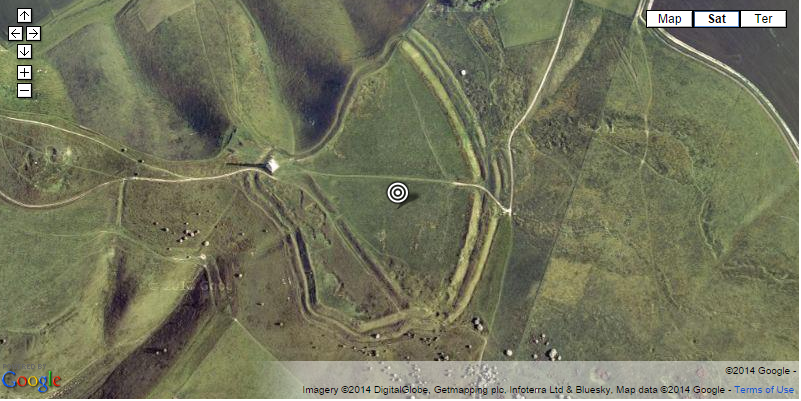
Aerial photo of Oldbury. The Lansdowne Monument is visible within the north-western part of the Iron Age hillfort. The White Horse is just out of shot at the top of the image area. Photo by Google.
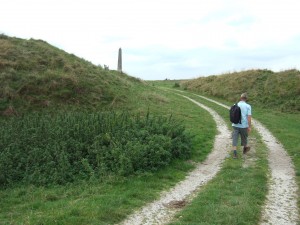
The entrance to the interior of the hillfort through the earthworks, in the east part of the hillfort.
On the north-facing slopes of the downland, and clearly visible from the A4, an old coaching road, is the Cherhill White Horse. This was constructed in 1780, the brainchild of Dr Christopher Alsop of Calne. Alsop was known as ‘The Mad Doctor’, and is reputed to have instructed the workers by shouting through a megaphone from the wonderfully-named Labour-in-Vain Hill. The horse was originally 50 m by 67 m (165 feet by 220 feet).
The construction method for a white horse is very simple—the thin turf and soil is removed from the underlying chalk bedrock. When first exposed, the chalk is a brilliant white, and so contrasts well with the surrounding turf. However, the chalk soon weathers, turning a greyish colour, sometimes a greeny-grey if algae grows on it, and weeds take hold. For this reason, hill-cut chalk figures (of which there are a good number in southern England) have to be regularly re-scoured or re-dressed with fresh chalk. As far as I can make out, it was last re-dressed in 2002.
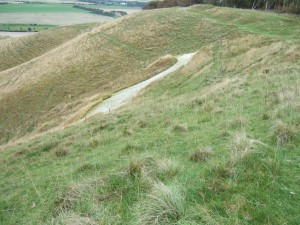
Close to, it is so large and becomes so abstract that you can barely make it out as a horse. Needs a good clean!
The Lansdowne Monument was designed by Sir Charles Barry (he of the Houses of Parliament), and built in 1845 by Henry Petty-Fitzmaurice, the 3rd Marquess of Lansdowne in memory of his ancestor Sir William Petty (1623-1687). Sir William was an economist, scientist and philosopher, and held the position of Surveyor General of Ireland in the 1660s. The Monument is 38 metres (125 feet) high, and is a Grade II* listed building.
The Monument is currently boarded up at its base for public safety: the Bath Stone quoins have been eroding away in the bad winter weather and large fragments of rock have dropped from it.
A sad sign of the times: on the boarding was a notice by the National Trust saying it is not known when funding will be available to repair the Monument.
Even though it was an overcast day, the views from the hill to the north are wonderful.
